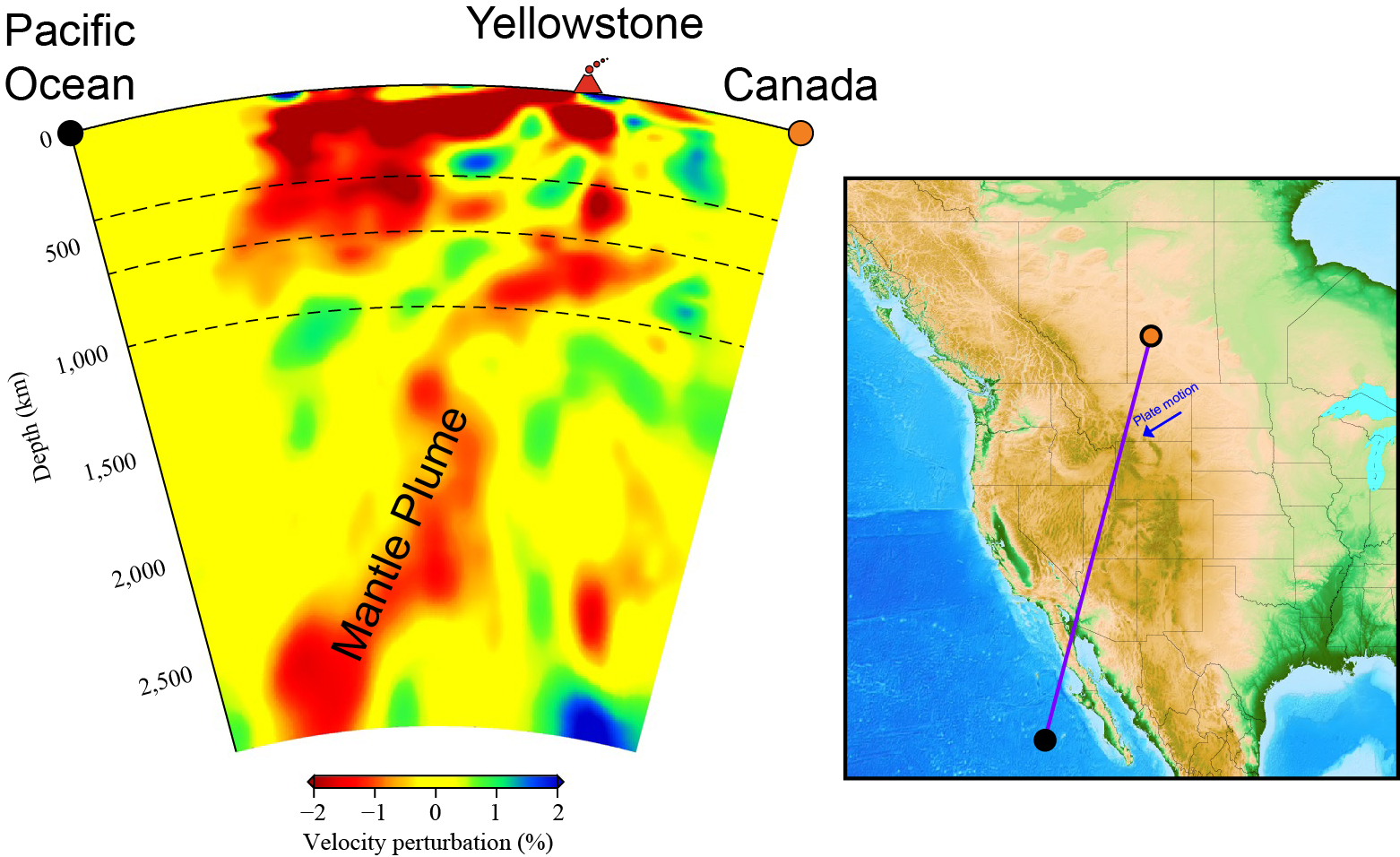2.9 Why? Hot spots
On the schematic plate tectonic cross section in Figure 2.03, the one intraplace volcano shown is attributed to a "mantle plume hot spot." The origin and nature of mantle plumes is still poorly constrained and under investigation, although recent seismic studies support a deep mantle origin near the core-mantle boundary (see for example Steinberger and others (2019)). Evidence for the deep roots of mantle plumes includes the decreased seismic velocities (red colors) in tomographic depth-velocity profiles of the mantle beneath hot spots such as the one shown in Figure 2.11 (above), USGS Image based on Nelson and Grand (2018). The red colors in Figure 2.11 show zones of anomalously low seismic velocity (presumably due to high temperatures), not zones of melting. As the anomalously hot rocks of the mantle plume rise toward the surface, they eventually melt.
There is still disagreement among geologists about where the melting occurs in the plume and the reasons for the melting. When the plume volcano occurs on ocean crust, like Hawaii, most of the erupted lavas are basalt. But the basalt chemistry is slightly different than mid-ocean ridge basalts (MORB). When the plume volcano erupts through continental crust, like Yellowstone, the lavas range from basalt to rhyolite. If you wish to solve the mysteries of mantle plume volcanism, you may be helped by the petrologic tools that are discussed in this online book.

Figure 2.11. Cross section through the Earth showing the Yellowstone mantle plume Depth cross section through the Earth, from the surface to the core-mantle boundary. The location of the section is shown by the purple line on the map. Warm colors indicate slower seismic velocities, which are areas of higher temperature. A plume of hot material originates at the core-mantle boundary and extends upward to the Yellowstone hotspot (marked by the volcano symbol at the surface). This is a USGS Image.